Cyclops | One-Eyed Giants

Cyclopes (from Ancient Greek Κύκλωψ, 'round eye', from κύκλος, transl. kýklos, 'circle', and ὤψ, transl. ṓps, 'eye') were, in Greek mythology, immortal giants with a single eye in the middle of their foreheads who, according to the hymn of Callimachus, worked with Hephaestus as blacksmiths, forging the thunderbolts used by Zeus.
Cyclopes can be divided into two groups according to the time of their existence: the ancient (or first generation) Cyclopes and the young (new generation) Cyclopes.
They appear in many myths of Greece, however with a rather controversial origin. According to their origin, these beings are organized into three different species: the Uranians, sons of Uranus and Gaia, the Sicilians, sons of the god of the seas Posidon, and the builders, who come from the territory of Lycia.
The Uranians
Arges, Brontes and Estéropes are considered the most ancient cyclops, descending from Uranus and Gaia. Legend has it that when they were born and because of their enormous powers, their father Uranus, lord of the heavens, locked them inside the Earth with their brothers, the hecatons, giants with one hundred arms and fifty heads.
Gaia, angered at having her children imprisoned in Tartarus, incites them to support the war waged by five of the six titans, also her children with Uranus, in order to take the throne of their father, who at the time ruled the heavens. The titans win, however the Cyclopes are sent back into the abyss of Tartarus.
At times, Zeus, as well as his brothers Posidon and Hades, released the Cyclops with the intention of having them as allies in the war against Kronos and the titans.
The Cyclops, as good blacksmiths, forged magical and powerful weapons for Zeus and his brothers: Zeus had received lightning and thunderbolts, Poseidon a trident capable of causing terrible storms, and Hades the Elm of Terror, which gave him invisibility.
Times later, when the Cyclopes were already considered Zeus' ministers and his permanent smiths, the great god perceived a threat in the physician Asclepius, son of the god Apollo.
Asclepius, through much study, managed to bring the dead back to life. Then, so that this would not cause any impact with the order of the world, Zeus decided to exterminate him. Upset and offended by Zeus' wrath on his son, Apollo decided to kill the cyclops who made his thunderbolts. There is evidence that it was not the cyclops who died at the hands of Apollo, but rather his sons.
The Sicilians
This race is depicted in the Homeric poems as gigantic and insolent outlaw shepherds, who inhabited the southwestern part of Sicily. They didn't care much for agriculture, and all the orchards cultivated in those lands were invaded by them when they looked for food. It is recorded that sometimes they even ate human flesh.
For this reason, they were considered to be beings who had no laws or morals, living in caves, each with his wife and children, who were disciplined quite arbitrarily by them.
Still according to Homer, not all Cyclopes had only one eye in the center of their foreheads, however Polyphemus, who was considered the main one among all the others, did have only one eye on his forehead.
Homer also points out that the Cyclops described in his poems no longer served Zeus and disrespected the great god.
Another myth about the Sicilians
According to Virgil and Euripides, the Cyclops were Hephaestus' assistants and worked inside the volcanoes along with the god, both on Mount Etna in Sicily and on other nearby islands. The two philosophers no longer described them as shepherds, but as blacksmiths who worked for the gods and heroes, forging their weapons.
The power of the Cyclopes was so great that Sicily, and other nearby places, could hear the sound of their hammering when they worked at the forge. It is believed that the number of Cyclopes increased, according to the poets, and that their dwelling was relocated to the southeastern part of Sicily.
There is, furthermore, a myth about the younger, or new generation, Cyclopes. Such Cyclops were also giants and had one eye on their foreheads, but unlike the earlier races, they were shepherds and lived on an island called Hypereia, known among the Romans as Sicily. It was exactly one of these Cyclopes, Polyphemus, that Ulysses encountered on his journey back to Ithaca, his home.
It is said that this new breed of Cyclops was born from the blood of the god Uranus who sneezed on the Earth, Gaia. However, Polyphemus was not the son of Uranus and Gaia, but of Posidon with the nymph Theosa.
Third species
It is said that there is also a third race of Cyclops, called builders, from the territory of Lycia. They possessed great physical power and were not violent. Their work was very heavy, and no human could do it so easily. These Cyclopes are suspected to be responsible for building the walls of the cities of Tiryns and Mycenae.
